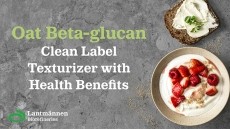Better knowledge of natural sugars could lead to ‘designer sweeteners’, say researchers

The study – published in Food Chemistry– assessed various naturally occurring sugars (oligosaccharides) for oral and intestinal digestibility, to test the influence of chemical structure on functional properties and measure their potential as new alternative sweeteners.
The research team, led by Anne Rae of University of Queensland, Australia, explained that increasing concerns about the effects of dietary sugars has bought about a growing interest in alternative sugars as sweeteners.
“The results will be important for predicting the value of naturally occurring sugars as non-calorific sweeteners and may also be used to inform combinatorial chemistry strategies to produce “designer” sweeteners,” explained Rae and her team.
“Advances in controlled carbohydrate synthesis through improved enzyme engineering techniques or use of microbial synthesis, may enable the development of novel functional food ingredients based on these principles,” they said.
Sweet demand
One of the main suggested causes for rising levels of obesity and type 2 diabetes is increasing consumption of sugar-rich processed foods. However, speaking at the International Sweetener Association (ISA) conference last year, ISA chairman Hans Heezen told FoodNavigator that the desire to eat sweet things should not be suppressed, but rather managed to allow consumers to enjoy the taste of products without the worry of unnecessary calories.
“Our desire for sweet taste is an essential and basic human characteristic - cutting out sweet foods and drinks is incredibly hard for most people so they're just not going to do it,” said Heezen.
As a result the food industry has begun to replace sugars with alternative sweeteners – many of which are non-calorific.
Rae and her team noted that in the food industry, sugars add not only provide sweetness, “but also colour, texture and preservation qualities.” They said that finding alternatives that match all of these functions can be difficult for industry.
Oligosaccharide analysis
Whilst many alternative sugars exist in the market, including sugars with low, or no, calorific value, there are many other naturally-occurring sugars that are not currently in commercial production, said the researchers.
“It is likely that some of these sugars will also display properties that would make them useful alternative sweeteners,” they argued.
“Although the major dietary sugars have been well studied, there are still many questions about the oral and intestinal utilization of potential novel sweeteners,” said Rae.
“Desirable properties for an alternative sweetener include low energy content due to low absorption or digestibility, and non-cariogenicity as a result of poor metabolism by oral bacteria, while ideally retaining solubility, texture (“mouth-feel”), crystallinity and bulking properties,” they explained.
Research details
In the new research, the team reported that utilisation of oligosaccharides by oral microorganisms and intestinal enzymes are important factors in determining their effectiveness as alternative sweeteners.
“In conjunction with other tests of physical and sensory properties, knowledge of the structures that are non-cariogenic and/or non-calorific will be useful in the selection and design of alternative sweeteners,” they said.
The sucrose isomers, α-glucobioses, β-glucobioses and sucrose-based oligosaccharides, structures were identified by the research team as ones that are not broken down by oral bacteria, “and would therefore contribute to the non-cariogenic potential of a sweetener.”
They said that results showed oligosaccharides containing a (1→6)-β-Glc group, including gentiobiose and gentiobiitol, together with melezitose, were resistant to digestion by both oral bacteria and mammalian intestinal enzymes, “highlighting their potential as dietary sugar substitutes.”
Source: Food Chemistry
Published online ahead of print, doi: 10.1016/j.foodchem.2011.12.031
“Oral and intestinal digestion of oligosaccharides as potential sweeteners; a systematic evaluation”
Authors: J. Hodoniczky, C.A. Morris, A.L. Rae



























